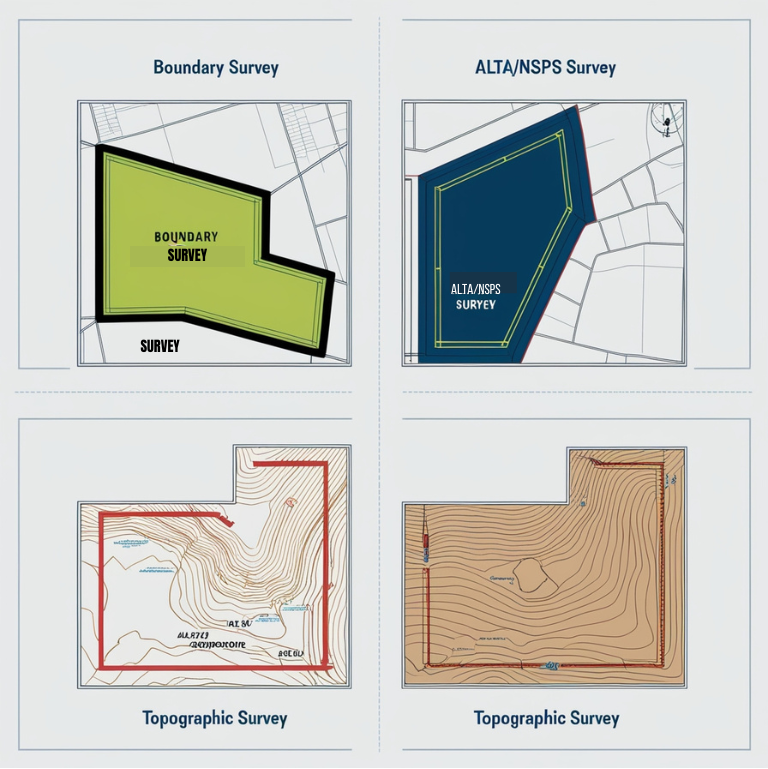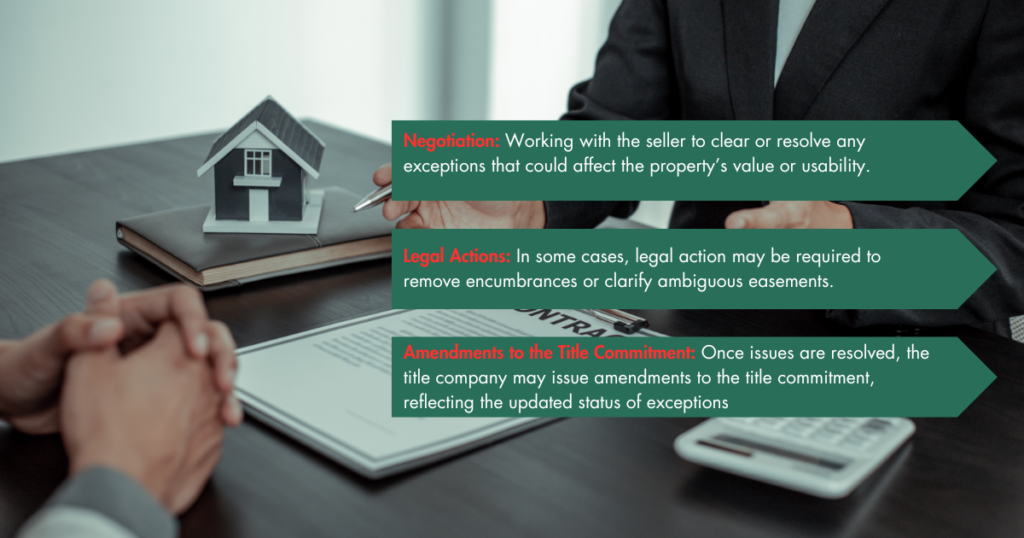Due Diligence in Commercial Real Estate: Land Surveys and Easements
In the complex world of commercial real estate, due diligence is a vital step that thoroughly evaluates all aspects of a property before finalizing a transaction. Among the many elements of due diligence, land surveys play a crucial role, particularly when it comes to understanding easements and identifying exceptions in the title commitment. This article delves into the intricacies of these processes, offering a comprehensive guide for commercial real estate professionals.
The Importance of Due Diligence in Commercial Real Estate
Due diligence in commercial real estate involves a thorough investigation of the property to confirm all facts and uncover any potential issues. This process is essential for buyers to make informed decisions and for sellers to provide transparency. One of the key components of due diligence is the land survey, which provides detailed information about the property’s boundaries, structures, and any encumbrances or benefits associated with it.
Understanding Land Surveys in Commercial Real Estate
A land survey is a precise measurement and mapping of a property’s dimensions, boundaries, and features. In commercial real estate, surveys are vital. They ensure the property being purchased accurately represents itself and is free from unforeseen issues that could impede its use or reduce its value.
Types of Land Surveys
- Boundary Survey: Establishes the exact boundaries of a property.
- ALTA/NSPS Survey: A comprehensive survey that includes boundary lines, easements, encroachments, and other significant property details, meeting the standards set by the American Land Title Association and the National Society of Professional Surveyors.
- Topographic Survey: Maps the terrain and features of a property, such as buildings, trees, and waterways.
Easements: Encumbering and Benefiting Properties
Easements are legal rights to use another person’s land for a specific purpose. In commercial real estate, understanding easements is crucial as they can either benefit or encumber a property.
Encumbering Easements
Encumbering easements restrict the use of a property. Common examples include:
- Utility Easements: Allow utility companies to install and maintain infrastructure such as power lines, water pipes, and sewers.
- Right-of-Way Easements: Grant others the right to travel across a property, often for access roads or pathways.
Benefiting Easements
Benefiting easements provide advantages to a property, such as:
- Access Easements: Allow property owners to access their land via another person’s property, often used for landlocked parcels.
- Utility Easements: May benefit a property by providing essential services like water, electricity, and sewage.
How Easements are Shown by Land Surveys
Land surveys depict easements through various symbols and notations on the survey plat. The surveyor will identify and document:
- Location and Dimensions: The exact placement and size of the easement area.
- Purpose: The specific use allowed by the easement.
- Benefiting and Burdened Properties: The properties that benefit from or are encumbered by the easement.
Identifying Easements During Due Diligence
During due diligence, reviewing the land survey for easements is critical. This process involves:
- Examining the Survey Plat: Carefully analyzing the survey to identify all marked easements.
- Reviewing Legal Descriptions: Cross-referencing the easements with their legal descriptions to understand their implications fully.
- Consulting with Experts: Engaging with surveyors, attorneys, and title companies to clarify any uncertainties regarding easements.
Title Commitment and Exceptions
A title commitment is a document issued by a title insurance company that outlines the terms under which it will insure the title to a property. It includes a schedule of exceptions, which lists issues that the title insurance policy will not cover. Identifying these exceptions is a critical part of due diligence.
Understanding Title Commitments
Title commitments typically consist of three parts:
- Schedule A: Provides basic information about the property, such as the legal description and current owner.
- Schedule B-I: Lists requirements that must be satisfied before the title insurance policy is issued.
- Schedule B-II: Enumerates exceptions to the coverage, which often include easements, liens, and other encumbrances.
Identifying Exceptions on the Title Commitment
To identify and address exceptions, follow these steps:
- Review Schedule B-II: Carefully read through the exceptions listed in Schedule B-II of the title commitment.
- Compare with Land Survey: Cross-reference the exceptions with the land survey to see how they impact the property.
- Seek Clarification: Consult with the title company and legal advisors to understand the nature of each exception and its potential implications.
- Address Issues: Negotiate with the seller to resolve any problematic exceptions, such as removing undisclosed liens or obtaining necessary easements.
The Process of Addressing Title Exceptions
Addressing title exceptions involves:
- Negotiation: Working with the seller to clear or resolve any exceptions that could affect the property’s value or usability.
- Legal Actions: In some cases, legal action may be required to remove encumbrances or clarify ambiguous easements.
- Amendments to the Title Commitment: Once issues are resolved, the title company may issue amendments to the title commitment, reflecting the updated status of exceptions
Conclusion
Navigating the due diligence process in commercial real estate, especially regarding land surveys and easements, requires meticulous attention to detail and a thorough understanding of legal and technical aspects. By comprehensively reviewing land surveys and title commitments, commercial real estate professionals can identify and address potential issues, ensuring a smooth and successful transaction.
FAQs
What is a land survey in commercial real estate?
A land survey in commercial real estate is a detailed measurement and mapping of a property’s boundaries, structures, and features, crucial for confirming property details and uncovering potential issues.
What are encumbering easements?
Encumbering easements are legal rights that restrict the use of a property, such as utility easements or right-of-way easements.
How are easements shown on land surveys?
Easements are depicted on land surveys through symbols and notations that indicate their location, dimensions, purpose, and the properties they benefit or burden.
What is a title commitment?
A title commitment is a document issued by a title insurance company that outlines the terms for insuring a property’s title, including schedules of requirements and exceptions.
How do you address exceptions found in a title commitment?
Addressing exceptions involves reviewing the title commitment, comparing it with the land survey, seeking clarification from experts, and negotiating with the seller to resolve issues.
Why is due diligence important in commercial real estate?
Due diligence is essential in commercial real estate to verify all property details, uncover potential issues, and ensure informed decision-making before finalizing a transaction.



